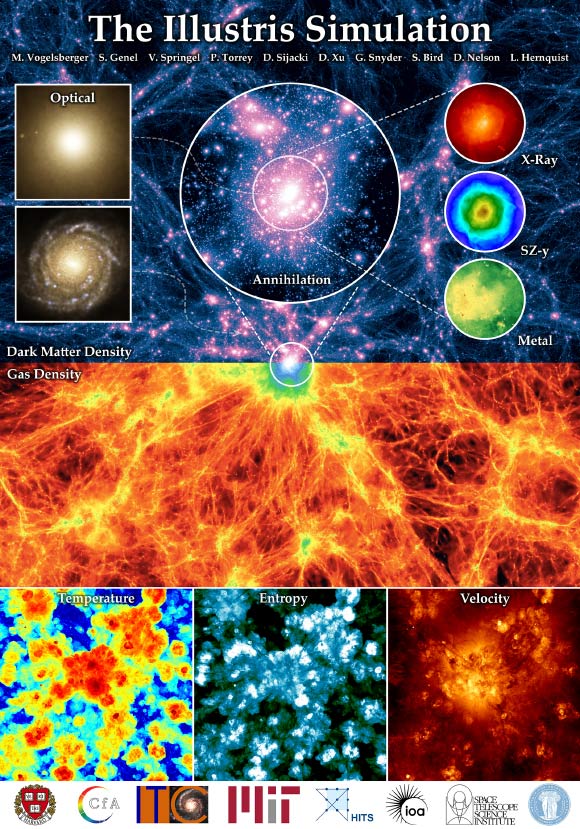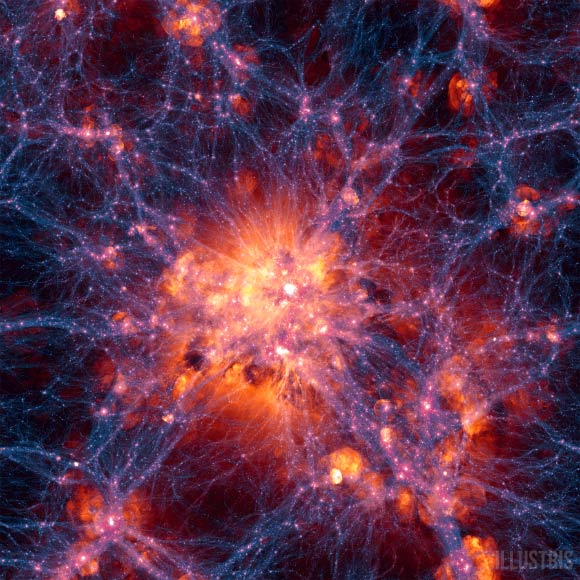Astronomers led Dr Mark Vogelsberger of MIT/Harvard-Smithsonian Center for Astrophysics have created the first realistic virtual Universe using a computer simulation called Illustris. It starts 12 million years after the Big Bang and traces 13 billion years of cosmic evolution with 12 billion resolution elements in a cube of 106.5 megaparsecs a side.

This poster shows the large scale dark matter and gas density fields in projection, top/bottom; the lower three panels show gas temperature, entropy, and velocity at the same scale; centered on the most massive cluster, for which the circular insets show four predicted observables; the two galaxy insets highlight a central elliptical and a spiral disk satellite. Image credit: Illustris Collaboration.
Previous attempts to simulate the Universe were hampered by lack of computing power and the complexities of the underlying physics. As a result those programs either were limited in resolution, or forced to focus on a small portion of the Universe.
Dr Vogelsberger’s team dedicated 5 years to developing the Illustris program, which recreates the evolution of the Universe in high fidelity.
The actual calculations took 3 months of run time. If the astronomers had used an average desktop computer, the calculations would have taken more than 2,000 years to complete.

Large scale projection through the Illustris volume at z=0, centered on the most massive cluster, 15 Mpc/h deep. Image credit: Illustris Collaboration.
The computer simulation began a mere 12 million years after the Big Bang. When it reached the present day, astronomers counted more than 41,000 galaxies in the cube of simulated space.
Importantly, Illustris yielded a realistic mix of spiral galaxies like the Milky Way and football-shaped elliptical galaxies. It also recreated large-scale structures like galaxy clusters and the bubbles and voids of the cosmic web. On the small scale, it accurately recreated the chemistries of individual galaxies.
“Until now, no single simulation was able to reproduce the universe on both large and small scales simultaneously,” said Dr Vogelsberger, who is the firs author of the paper published in the journal Nature.
“Illustris is like a time machine. We can go forward and backward in time. We can pause the simulation and zoom into a single galaxy or galaxy cluster to see what’s really going on,” added study co-author Dr Shy Genel of Harvard-Smithsonian Center for Astrophysics.
______
M. Vogelsberger et al. 2014. Properties of galaxies reproduced by a hydrodynamic simulation. Nature 509, 177–182; doi: 10.1038/nature13316







